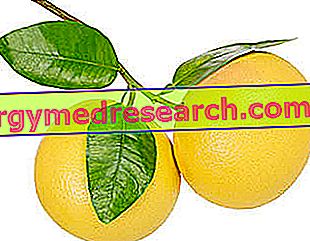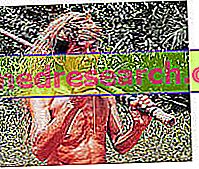
Scientific name
Aesculus hippocastanum
Family
Hippocastanaceae
Origin
Eastern Europe
Synonyms
Indian chestnut
Used Parts
Drug given by the seeds (chestnuts of India)
Chemical constituents
- Triterpene saponosides (escin, cryptoescin A);
- Flavonoids (quercetin, kaempferol);
- proanthocyanidins;
- Catechic tannins;
- allantoin;
- Starches;
- Cumarinic glucosides (aesculin).
Horse Chestnut in Herbal Medicine: Property of the Ippocastano
The horse chestnut has many pharmacological properties. In particular, it has been shown that the horse chestnut has a beneficial action against blood vessels - in particular, against capillaries and veins - therefore, it has proved to be an excellent remedy against disorders caused by peripheral venous insufficiency, varicose veins and postphlebitic syndromes, hemorrhoids, cellulite and capillary fragility.
Biological activity
The use of the horse chestnut has received official approval for the treatment of venous circulatory disorders. This was possible thanks to the activity carried out above all by the escin contained in the seeds of the plant.
Escin is a mixture of triterpene saponins able to perform numerous actions at the level of blood vessels, among which we recall:
- increased venous tone, with consequent improvement in venous return;
- increased capillary resistance;
- the reduction of capillary permeability, with consequent inhibition of transcapillary filtration of water, electrolytes and low molecular weight proteins;
- the removal of accumulated interstitial fluids (anti-edema action).
Furthermore, from a study conducted on 80 patients suffering from hemorrhoids, it emerged that taking the horse-chestnut seed extract three times a day for a period of two months is able to reduce the bleeding and swelling caused by this disorder. At each administration the patients were given an amount of extract corresponding to about 40 mg of escin.
Furthermore, both the escin and the esculoside (a coumarin glycoside) contained in the plant are attributed anti-inflammatory properties that seem to be exercised through inhibition of the synthesis of pro-inflammatory cytokines, such as interleukins and TNF-α.
Horse chestnut against venous insufficiency
Thanks to all the activities carried out by the escin contained in the horse chestnut against the capillaries and veins, the use of the plant is a valid aid for the treatment of all those disorders characterized by venous insufficiency and by the symptoms associated with it, such as swelling, heaviness, pain and itching.
As an indication, for the treatment of the aforementioned disorders, we recommend taking a quantity of dry horse chestnut extract corresponding to approximately 40-120 mg of escin per day.
Various preparations based on horse chestnut are available on the market; the dose of product to be taken, therefore, will be different depending on the amount of escin contained in the preparation to be used.
However, for more information about the uses of horse chestnut in the treatment of venous circulatory disorders, we recommend reading the article dedicated "Taking care of the horse chestnut".
Horse Chestnut in folk medicine and homeopathy
In folk medicine, horse chestnut leaves are used as a remedy for coughs, arthritis and rheumatism.
Other unapproved uses of the leaves of this plant concern their use to counteract disorders such as hemorrhoids, phlebitis, varicose veins and menstrual pain.
Horse chestnut seeds, on the other hand, are used in traditional medicine for the treatment of bruises, sprains, back pain, rheumatic disorders, edema, chronic prostatitis and varicose veins.
The horse chestnut is also exploited by homeopathic medicine, where it can be found in the form of oral drops, granules and glyceric macerate. In this context, the plant is used as a remedy in the case of hemorrhoids, pain in the sacroiliac area, lumbago, varicose veins and venous ulcers.
The dose of homeopathic remedy to be taken may vary between individuals, depending on the type of disorder to be treated and the type of homeopathic preparation and dilution to be used.
Watch the video
X Watch the video on youtubeHorse Chestnut - Side Effects
Following the consumption of horse chestnut seeds, irritation may occur in the gastrointestinal mucosa. Furthermore, in patients with pre-existing renal insufficiency, a further reduction in kidney function may occur.
In some cases, due to the use of horse chestnut seeds, the appearance of hives and hepatotoxicity has also been reported.
Contraindications
Avoid the use of horse chestnut in case of hypersensitivity to one or more components, renal disease or renal failure, in the pediatric age, pregnancy, lactation and in the presence of peptic ulcers.
Pharmacological Interactions
- a case of autoimmune disease ('pseudolupus' syndrome) after taking an association of horse chestnut, phenopirazone and plants containing cardioactive glucosides; it has never been established which component was responsible for this syndrome;
- escin, due to its binding to plasma proteins, could reduce the transport of drugs taken at the same time;
- due to the presence of coumarins with antithrombotic activity, it is theoretically possible to interact with anti-aggregating or anticoagulant drugs.



